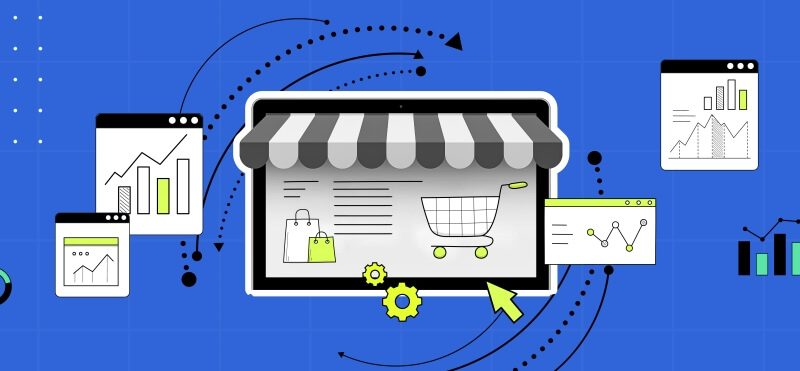As a business owner, you are likely focused on attracting new customers. But, did you know that your existing customers are just as crucial, if not more so? Customer retention is a critical aspect of any successful business. It measures how many customers you are able to retain over a certain period of time.
In this article, we’ll explore the importance of understanding customer retention rate and share some tips on how you can improve it for your business.
What is Customer Retention Rate (CRR)?
Customer retention rate (CRR) is a metric that measures the percentage of customers who continue to do business with your company over a certain period of time. It is a key performance indicator (KPI) that helps you understand how well your business is doing regarding customer loyalty.
The Importance of Customer Retention Rate
Customer retention rate is important for several reasons. First, it is a measure of customer loyalty. Secondly, customers who continue to do business with your company are more likely to refer others to you, which can help you attract new customers. Thirdly, retaining existing customers is less expensive than it is to acquire new ones. Finally, loyal customers are more likely to purchase more frequently and spend more money than new customers.
The Relationship between Customer Retention and Business Growth
Customer retention is closely tied to business growth. This is because loyal customers purchase from you again and again, which can help boost your revenue.
Your loyal customers are more likely to refer others to your business. Word-of-mouth marketing is still proving to be an effective form of marketing, and it’s free! By focusing on customer retention, you can build a loyal customer base and help your business grow.
Key Metrics to Track for Customer Retention
In addition to customer retention rate, there are several other key metrics that you should track to measure customer retention.
- Churn rate: the percentage of customers who stopped doing business with your company over a certain period of time.
- Lifetime value: the total amount of money a customer is expected to spend over their entire relationship with your company.
- Repeat purchase rate: the percentage of customers who make a second purchase from your company.
- Net promoter score: the likelihood that the customers will refer others to your business.
By tracking these metrics, you can gain a better understanding of how well your business is doing in terms of customer retention.
How to Calculate Customer Retention Rate
Calculating customer retention rate is relatively simple. To use this formula CRR = ((E-N)/S) x 100, you need the establish the following metrics:
- Choose a time period (such as a month or a quarter).
- Define the number of customers you had at the end of the period (E).
- Determine the number of new customers during that period (N).
- Define the number of customers you had at the start of the period (S).
Once you have all your numbers ready, just use the above formula. Subtract the number of new customers (N) from the customer at the end (E) of a given period and then divide that result by the number of customers at the start (S) of that time period, and finally multiply that number by 100 to get percentages.
Factors Affecting Customer Retention Rate
There are several factors that can affect customer retention rate.
- Customer service: Poor customer service often leads to unhappy customers who are less likely to do business with you again.
- Product quality: If your products are of poor quality, customers are less likely to be satisfied and more likely to go to your competitors.
- Price: If your prices are too high, customers may go to your competitors who offer lower prices.
- Convenience: If it’s difficult for customers to do business with you (such as long wait times or complicated checkout processes), they may go to your competitors, who offer a more convenient experience.
By focusing on improving these factors, you can increase your customer retention rate.
Strategies to Improve Customer Retention Rate
Now that we shed some light on the importance of customer retention rate and the factors that affect it, we can explore some strategies:
- Provide excellent customer service: This is one of the most important factors in customer retention. Make sure your customer service team is well-trained and responsive to customer needs.
- Offer a loyalty program: A loyalty program can encourage customers to continue doing business with you. For example, offer rewards for repeat purchases or referrals.
- Personalize your marketing: Use customer data to personalize your marketing messages. This can help customers feel valued and more likely to repeat business with you. For this purpose you can also use the service data from the support ticket.
- Ask for feedback: Encourage customers to provide feedback on their experience with your company. It can assist you in identifying areas for improvement and showing customers how much you value their opinions.
- Follow up: After purchase, follow up with customers to ensure they are satisfied with their experience. This can help identify and resolve any issues before they become more significant problems.
Tools and Techniques to Measure Customer Retention Rate
You can use several tools and techniques to measure customer retention rate.
- CRM software: Customer relationship management software (CRM) can help you track customer data and measure retention rates.
- Surveys: Surveys can assist in gathering feedback from customers and measuring satisfaction levels.
- Analytics tools: Analytics tools can help you track customer behavior and identify trends over time.
By using these tools and techniques, you can gain a better understanding of your customer retention rate and make data-driven decisions to improve it.
Best Practices for Customer Retention in Different Industries
Different industries may have different best practices for customer retention. Here are some examples:
- E-commerce: Offering free shipping and easy returns can help improve customer retention in e-commerce.
- SaaS: Providing excellent customer support and offering regular product updates can help improve customer retention in SaaS.
- Restaurants: Offering loyalty programs can help improve customer retention in restaurants.
By understanding the best practices in your industry, you can tailor your customer retention strategies to better meet the needs of your customers.
Conclusion
Customer retention rate is a critical metric for any business. By understanding the importance of customer retention, tracking key metrics, and implementing strategies to improve retention, you can build a loyal customer base that can help your business weather any economic storms that come your way.
Remember to focus on providing excellent customer service, personalizing your marketing, and following up with customers to ensure they are satisfied with their experience. By doing so, you can keep your customers coming back for more!
Learn more and improve your customer retention rate using a data-driven approach.






